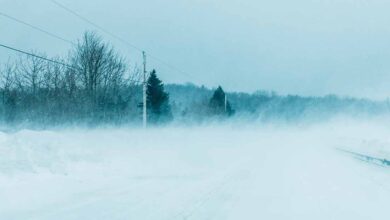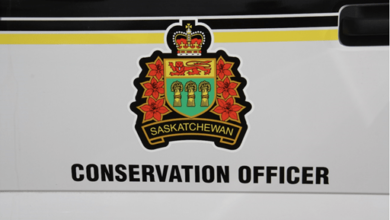
How Can You Help Your Wetlands This Spring?
By Keana Boere, AAg, Agri-Environmental Specialist, Outlook
pring thaw, with the start of a new growing season and moisture from winter snowfall, can be an exciting time for Saskatchewan producers. Wetland ecosystems and riparian areas play a key role in managing spring runoff water. However, these ecosystems are vulnerable during the spring months. Maintaining the health of the environment and livestock is important as many livestock producers use wetlands as a water source and riparian areas as a forage resource during the growing season.
Riparian areas are the transition or green zones between the open water of a wetland and the upland vegetation. While they vary in size and looks, they are all influenced by water at some point in the year. Water-loving plants like sedges, cattails and willows can be present and soils will show signs of water saturation. Wetlands and their riparian areas serve many ecological functions that maintain good water quality. Deep roots of wetland vegetation hold the soil together, reducing erosion. Riparian area vegetation slows the speed of flowing water, which reduces erosion, but also traps sediments, contaminants and excess nutrients. These all help protect water quality.
In the spring, higher volumes of runoff water reaching and flowing into wetlands increase risk for erosion and contamination. Maintaining vegetation buffers around wetlands helps slow the speed of flowing water entering the waterbody. The vegetation also acts as a filter and can remove some of the suspended particles as the water slows.
Riparian area soils and vegetation are more vulnerable in the spring. Soils that are saturated with water are at a greater risk of compaction; animal hooves can easily cause damage like pugging and hummocking. Pugs describe the depressions that animal hooves leave in soft soil and hummocks are the raised bump of soil pushed up from the pug. In the spring, riparian area plants are just beginning to grow after overwintering. Deferring grazing in riparian areas until later summer will benefit the soil and plants. Drier soils are less susceptible to compaction and damage from livestock hooves. Allowing riparian vegetation an opportunity to grow in the spring will provide valuable forage later in the season when other upland forage resources begin to fade.
Funding is available for projects in riparian areas through the Sustainable Canadian Agricultural Partnership. Riparian Grazing Management Beneficial Management Practices protect water quality by funding infrastructure to exclude or properly manage the timing, intensity and duration of livestock grazing along riparian areas. If you have questions about managing your wetlands or riparian areas in the spring, or about funding available, contact your local agri-environmental specialist.








































